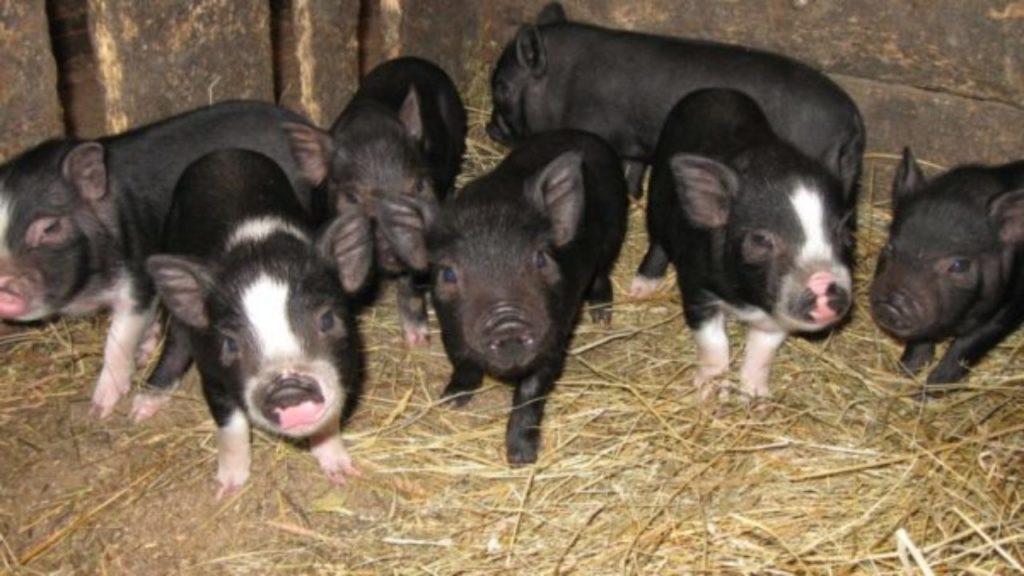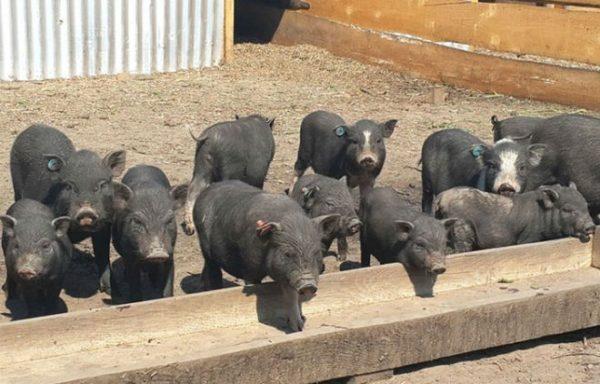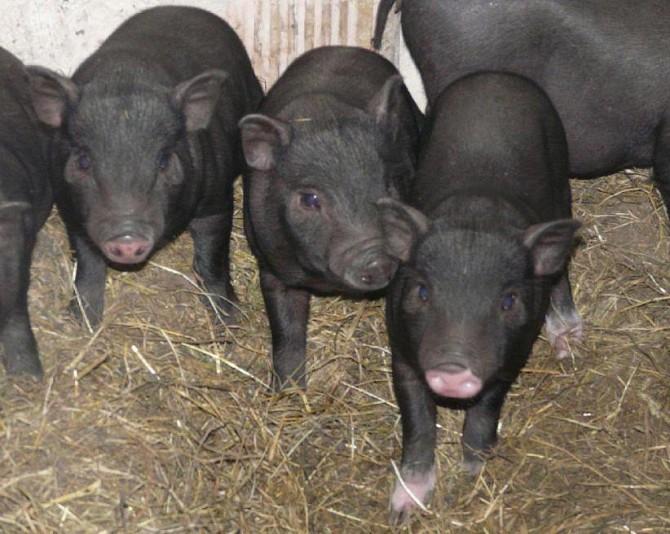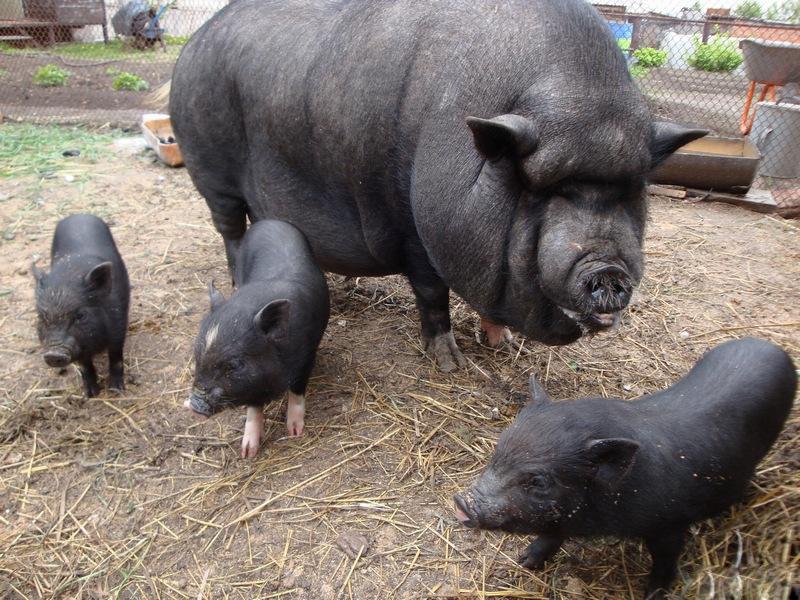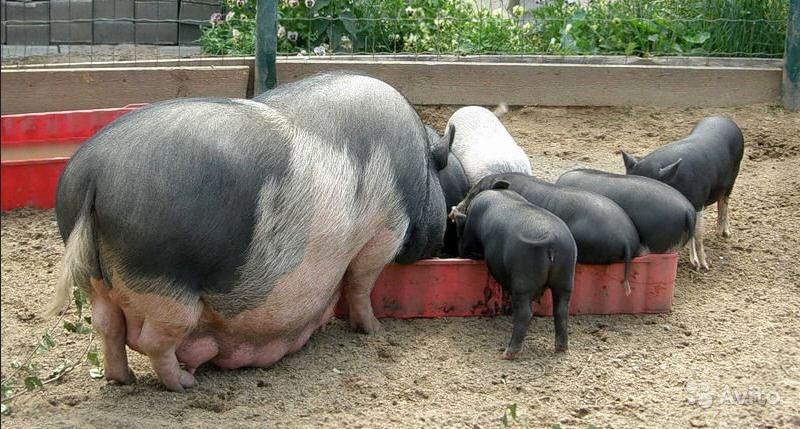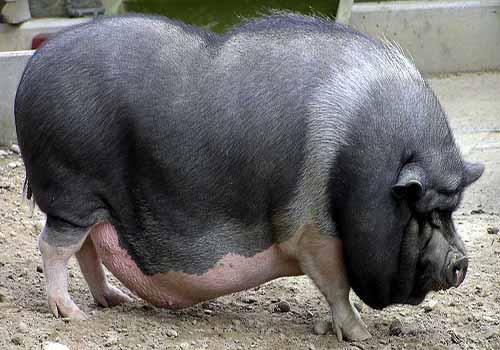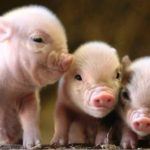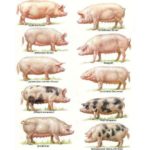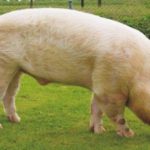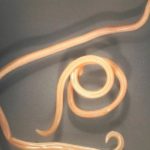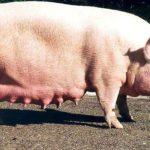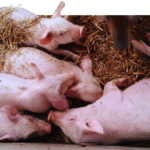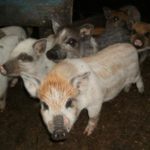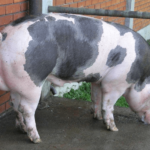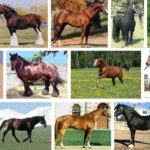The reason why farmers and households choose to keep Vietnamese piglets is their rapid growth, in contrast to white breeds. In addition, after the first year of life, the weight of one pig is 100 kg, and the feed consumption is significantly lower. However, in order to take advantage of all the advantages of the breed, it is necessary to choose the right piglet, create comfortable living conditions for it and provide a balanced diet.
History of the breed
The Vietnamese pot-bellied pig was brought to Europe and Canada not so long ago - in the 80s of the last century. In a fairly short time, the breed spread throughout the world due to the profitability of pig breeding. In Hungary and Canada, breeding work is still underway to improve the performance of the breed.
Description and characteristics of Vietnamese pigs
The main distinguishing feature of the Vietnamese breed is its rapid maturation, which became the reason for its rapid spread throughout the world. Piglets of this species are not afraid of either heat or cold. The only thing animals need to be protected from throughout their lives is drafts. Piglets react negatively to them and may get sick.
The pot-bellied pig got its name from its characteristic appearance. On relatively short legs there is a huge body with a belly hanging almost to the ground. Today there are both white and black piglets on sale, as well as merle-colored ones. There are small ears on the massive head, and the back is slightly concave. The stigma has a large number of folds, which is why it is shaped somewhat like an accordion. Vietnamese pigs grow over the course of 5 years, although this process slows down every year. Typically, farmers send animals for slaughter at the age of 1 to 1.5 years. Only the female and the boar are left for breeding.
Advantages and disadvantages
Before deciding to choose a breed, study its strengths and weaknesses.
The advantages of the Vietnamese pot-bellied pig include:
- Fast weight gain.
- Low percentage of fat compared to other breeds.
- Unpretentiousness to living conditions.
- Rapid puberty.
- Undemanding diet.
- Possibility of almost year-round walking.
- Almost complete absence of specific odor.
- Strong immunity.
- Calm and good-natured character.
The only disadvantages include the higher cost of piglets compared to other breeds.
Rules for choosing piglets
In order to raise healthy animals capable of producing healthy and strong offspring in the future, it is necessary to take a responsible approach to purchasing piglets.
First of all, pay attention to the following parameters:
- Ask the seller to show the sow from which the piglet is being sold.
- Take an interest in the weight with which the animal was born and track its dynamics over 10 days.
- Assess the appearance of the piglet - a healthy animal has well-developed muscles, strong, widely spaced legs, smooth hair and shiny eyes.
- Ask what the piglets were fed.
You should not buy animals if there were more than 12 of them in one litter and if the farm has one boar for several sows.
Content Features
After purchasing young animals, it is important to provide them with suitable living conditions.
Experienced farmers willingly share their secrets with novice breeders.
Premises requirements
Criteria for arranging a pigsty:
- The best place for pigs is considered to be a brick barn with a concrete floor.
- To protect animals from the cold during winter frosts, 2/3 is covered with wooden boards.
- For one machine with an area of 4.5 sq. meters there should not be more than 2 individuals.
- A passage is left along the entire pigsty so that a cart for collecting manure can pass through it freely.
- They organize a complete ventilation system so as not to provoke outbreaks of infectious diseases.
- They arrange the heating system according to their taste and capabilities.It is important that the temperature in the pigsty does not fall below 18-20 degrees, otherwise it will negatively affect the health of the sow and her offspring.
Caring for animals is impossible without providing daily walking in the fresh air. If there are no trees in the selected area, several logs are dug in specially, because animals really like to scratch their backs. It is also necessary to equip a canopy so that the pigs can hide in rainy or sunny weather.
In addition, it would not be superfluous to build an impromptu mud pool. Its dimensions are 2 x 2 meters. Periodically, the water in it is changed to fresh.
Feeding and required diet, diagram
The diet is different for piglets and adult pigs. Feeding is one of the most important stages in raising Vietnamese piglets. Also, not only health, but also the quality of the resulting meat depends on this stage of care. Coarse feed is not used in the Vietnamese diet - this is due to the structural features of their digestive system. Pigs of this breed have small intestines and stomachs. Therefore, straw and fodder beets are excluded from the diet - such food will not bring any benefit to the animals. Use alfalfa or clover hay for feeding.
Also in the diet of animals there must be mixed feed, the consistency of which resembles thick porridge.
To improve the process of digestion and assimilation of food, ground grains are used. The main part of the feed should be wheat and barley. Peas, oats and corn are also added, but make sure that the latter component is no more than 10%. With an excess of this component, pigs become obese. You can’t do without adding vitamins to your diet - fish oil, as well as fresh vegetables such as pumpkin, carrots and zucchini, are considered especially beneficial for animals. Don't forget about milk and eggs.
Common diseases
If the conditions of keeping animals are violated, they develop diseases that are important to detect in time in order to begin treatment. The most common diseases of the “Vietnamese” are the following:
- Salmonellosis. There is a refusal of food, and the animals develop a fever. It is most common in piglets, so it is important to adhere to the vaccination schedule.
- Infection with worms. The reason is considered to be unsanitary conditions in the premises where animals are kept. Poor appetite, nervousness or, conversely, lethargy are the first symptoms of the disease in piglets. Sick piglets are isolated from the rest of the herd and any anti-worm medication in tablet form is used.
- Dysentery. A more dangerous disease that also develops from dirt and untimely cleaning of the premises. It more often affects young piglets than adults.
- Aujeszky's disease. Refers to dangerous viral diseases. When a virus enters an animal’s body, it begins to walk in a circle, then lies on its side, develops severe skin itching, then convulsions and paralysis of the larynx. After the first signs appear, the animal dies within 2 days. Since there is no cure, it is important to vaccinate piglets on time.
- Erysipelas. The causative agent of the pathology is erysipelas bacteria. Individuals aged 3 months to 1 year most often suffer from the disease. Difficulty breathing, redness of the skin, high fever, refusal to eat are the first symptoms of erysipelas. The outcome depends on the form of the disease.It happens that piglets die within a few hours after the first symptoms appear.
It is not recommended to self-medicate only on the basis of symptoms - only an experienced veterinarian will be able to make an accurate diagnosis of piglets and prescribe medications; if this rule is violated, there is a risk of losing the entire livestock.
Reproduction
Beginning farmers do not breed pigs at home, since they need to have some experience in this matter. For breeding, a boar and a pig are selected - it is important that they are not from the same family. If there are family ties between animals, it will not be possible to get full-fledged offspring. By the age of 4 months, the pig is considered sexually mature. In the first farrow there are usually no more than 5 cubs, in subsequent times their number increases and can reach 20. Young animals appear on the 114th or 118th day of pregnancy. After this, it is important to provide the babies and mother with proper living conditions.

